I’ve spent quite a bit of time over the last few weeks learning the ins and outs of the Parallax Propeller micro-controller (Prop). Once I learned the basics, I started working on a remote control system for the RV-8 engine preheater. The concept of operations is to use a cell phone to trigger the preheater. The cell phone display illuminates when it receives a call, then goes dark a few seconds later. The illumination or dark state of the display can be detected by a CdS photocell connected to the Propeller micro-controller. Two calls received in an 80 second period will cause the Propeller to close a solid state relay (SSR) which controls the preheater, and leave it ON for six hours. If two more calls are detected it will reset the timer to 6 hours, to cover the case where my arrival at the airport is delayed. Three calls in 120 seconds will set the preheat to OFF if it was ON.
The Prop is really overkill for this mission, but I wanted to get some experience with it as I have some thoughts about using it in the future for a pitch axis autopilot. The 8 CPUs in the Prop are ideal for my autopilot project, as I will be able to give some important tasks their own CPU to ensure they happen on schedule, no matter what other busy tasks are running.
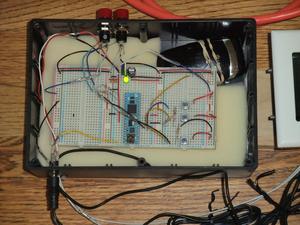 Today I finished the proof of concept prototype of the preheat controller, and did several functional tests with it controlling a lamp. It is set up on a solderless breadboard - I’ll solder up the next version on a BPS 1553 breadboard once I have confirmed that this thing really works. The circuit is inside an enclosure, to protect it, and because the photocell needs a fairly dark environment so help it detect when a call is received. Some of the stuff on the solderless breadboard isn’t needed, such as the three momentary push buttons, which where used during the initial tests before I had the cell phone hooked up to the photocell.
Today I finished the proof of concept prototype of the preheat controller, and did several functional tests with it controlling a lamp. It is set up on a solderless breadboard - I’ll solder up the next version on a BPS 1553 breadboard once I have confirmed that this thing really works. The circuit is inside an enclosure, to protect it, and because the photocell needs a fairly dark environment so help it detect when a call is received. Some of the stuff on the solderless breadboard isn’t needed, such as the three momentary push buttons, which where used during the initial tests before I had the cell phone hooked up to the photocell.
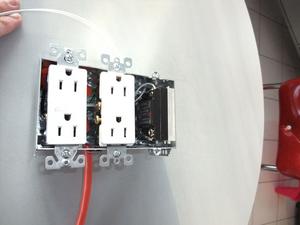 The SSR and all the 120V AC high voltage stuff is inside a standard house electrical box. Two of the outlets are always hot, to provide power for the cell phone charger and the power supply for the Prop. The other two outlets are controlled by the SSR.
The SSR and all the 120V AC high voltage stuff is inside a standard house electrical box. Two of the outlets are always hot, to provide power for the cell phone charger and the power supply for the Prop. The other two outlets are controlled by the SSR.
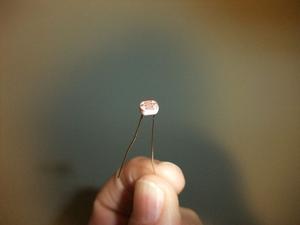 The CdS photocell is basically a resistor whose resistance changes depending on how much light is shining on it. It is secured to the cell phone display with a rubber band.
The CdS photocell is basically a resistor whose resistance changes depending on how much light is shining on it. It is secured to the cell phone display with a rubber band.
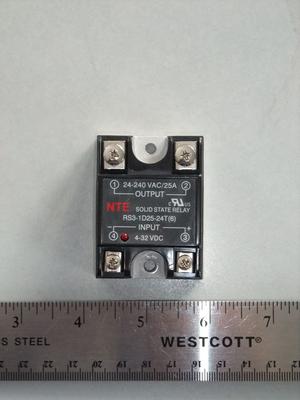 I’m using an NTE RS3-1D25-24T SSR. I was surprised to see that the label says it needs 4V DC to control it, as the spec sheet says it only needs 3V. The Prop is a 3.3V device (however only 2.7V is guaranteed as output), to I was concerned. But, it works.
I’m using an NTE RS3-1D25-24T SSR. I was surprised to see that the label says it needs 4V DC to control it, as the spec sheet says it only needs 3V. The Prop is a 3.3V device (however only 2.7V is guaranteed as output), to I was concerned. But, it works.
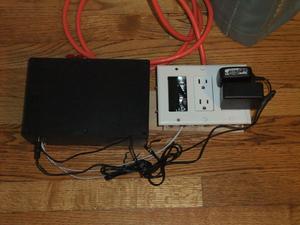 The enclosure and electrical box are screwed to a piece of wood to keep them tied together as one assembly.
The enclosure and electrical box are screwed to a piece of wood to keep them tied together as one assembly.